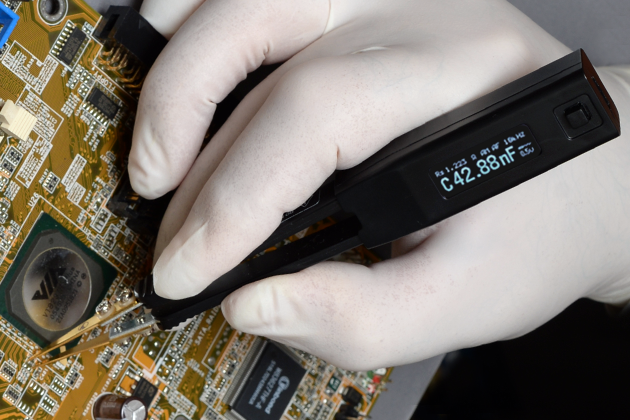Most people would have something different in mind when they hear the compound 'smart' + <noun> together. Prior to the era of the internet, the 5-letter adjective would only come before cognizant beings, such as a mouse. For example, "Jerry tricked Tom into hurting himself again. He sure is one smart mouse". Being an adjective meaning quick-witted intelligence, it was never used to describe brainless inanimate objects. Hence, the phrases "smart car", "smart TV" or "smart refrigerator" were unheard of. Technology changes society and these days, they preponderate daily life conversations.
Thus, adding a wireless interface to a device to make it user-interactive from a remote location makes the device 'smart'. Ironically, this only applies to non-cognizant beings (connecting a sentient life form such as yourself to a wireless network doesn't make you a smart person unfortunately, just a smart aleck).
Now, there are smart phones, smart cars, smart thermostats, smart doorbells, smart locks, smart watches, smart bands, smart key chains, smart speakers, etc. you name it. It's like the market went crazy after finding out how profitable smart products are that they started adding the word 'smart' to everything they can.
And I'm serious.
Heck, even lipstick isn't exempted from this IoT craze! (link below)
Okay... that may not really be lipstick but you get the point. Back to the main topic, we come upon the smart tweezer.
(Image Source: http://www.smarttweezers.com/st5s/)
Unlike how smart devices are defined, the smart tweezer isn't connected by a wireless protocol because then you'll have to rely on "Paranormal Activity" to move the tweezer. It hosts a range of functions you wish you had with your boring tweezers, like a cool OLED display and stuff. It doesn't have an MP3 player yet but I heard rumors of plans on adding one.
The smart tweezer is a revolutionary invention for engineers who handle surface-mount components because aside from the gold-plated leads that ensure minimal parasitic contact resistance, they take electrical measurements that would have normally needed more expensive instruments. The user also need not worry of bulky connectors or SMT-congested areas on the board because smart tweezers, being tweezers, have those convenient pointy edges that enable easy navigation through narrow hard-to-reach crevices.
Everything has their flaws, and the smart tweezer has a few. Non-linear AC parameters depend on the frequency of the test signal. With the smart tweezer, frequencies are usually limited to 1kHz or 10kHz, which put a bar on the measurement range of capacitance and inductance. Squeezing SMT components between the gold plates also does not guarantee a correct measurement. There may be unwanted debris and dust in the contacts that lessen measurement accuracy. Finally, there is the grip on the smart tweezer, which may give an uncomfortable or unfamiliar feel to the user's hand. Either that or I'm just being too sensitive.
Nonetheless, smart tweezers are important because they also give the actual ESR and ESL, parameters crucial to determining the performance of the overall application circuit, such as a DC-DC converter for mobile applications. I highly recommend this product (a must-have) to those whose work heavily involves SMT components, but I wouldn't recommend it to hobbyists because of the price tag ($600-$700 Cheesus Riced!)
For more information, DigiKey has a detailed training module on smart tweezers (link below)
https://www.digikey.com/en/ptm/i/ideal-tek/smart-tweezer/tutorial
Also, when handling a smart tweezer, it might be a bad idea to use it while mounting or re-mounting SMT components as the gold-plated leads may corrode in the process.
The smart tweezer is a revolutionary invention for engineers who handle surface-mount components because aside from the gold-plated leads that ensure minimal parasitic contact resistance, they take electrical measurements that would have normally needed more expensive instruments. The user also need not worry of bulky connectors or SMT-congested areas on the board because smart tweezers, being tweezers, have those convenient pointy edges that enable easy navigation through narrow hard-to-reach crevices.
Everything has their flaws, and the smart tweezer has a few. Non-linear AC parameters depend on the frequency of the test signal. With the smart tweezer, frequencies are usually limited to 1kHz or 10kHz, which put a bar on the measurement range of capacitance and inductance. Squeezing SMT components between the gold plates also does not guarantee a correct measurement. There may be unwanted debris and dust in the contacts that lessen measurement accuracy. Finally, there is the grip on the smart tweezer, which may give an uncomfortable or unfamiliar feel to the user's hand. Either that or I'm just being too sensitive.
Nonetheless, smart tweezers are important because they also give the actual ESR and ESL, parameters crucial to determining the performance of the overall application circuit, such as a DC-DC converter for mobile applications. I highly recommend this product (a must-have) to those whose work heavily involves SMT components, but I wouldn't recommend it to hobbyists because of the price tag ($600-$700 Cheesus Riced!)
For more information, DigiKey has a detailed training module on smart tweezers (link below)
https://www.digikey.com/en/ptm/i/ideal-tek/smart-tweezer/tutorial
Also, when handling a smart tweezer, it might be a bad idea to use it while mounting or re-mounting SMT components as the gold-plated leads may corrode in the process.




0 Comments